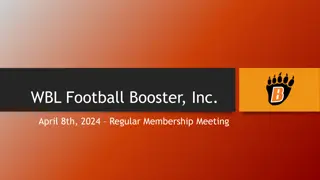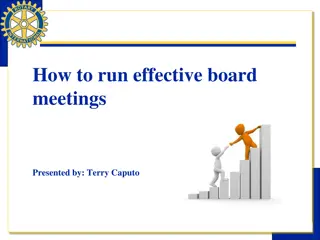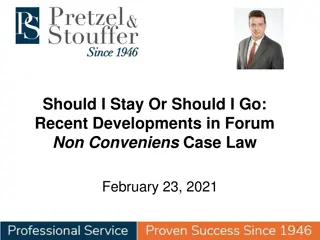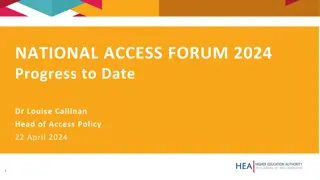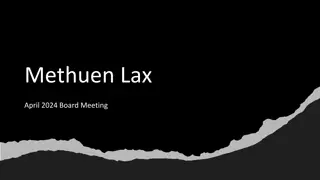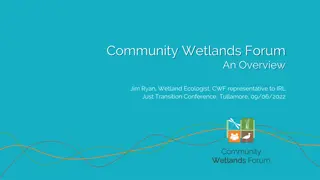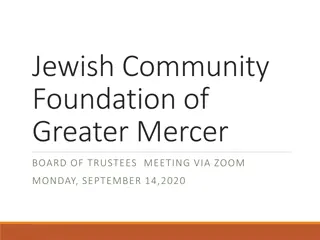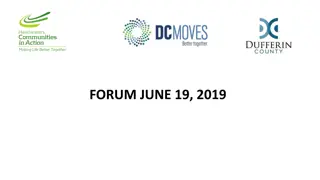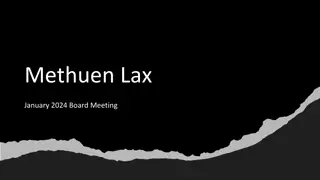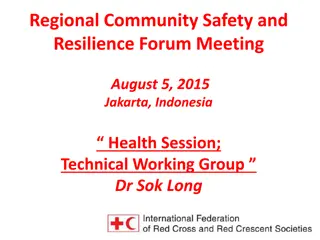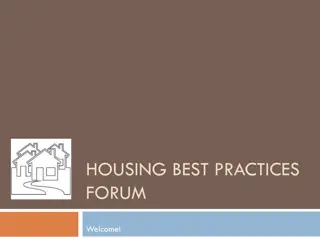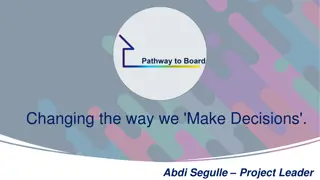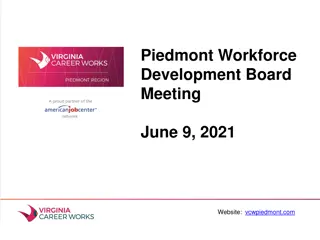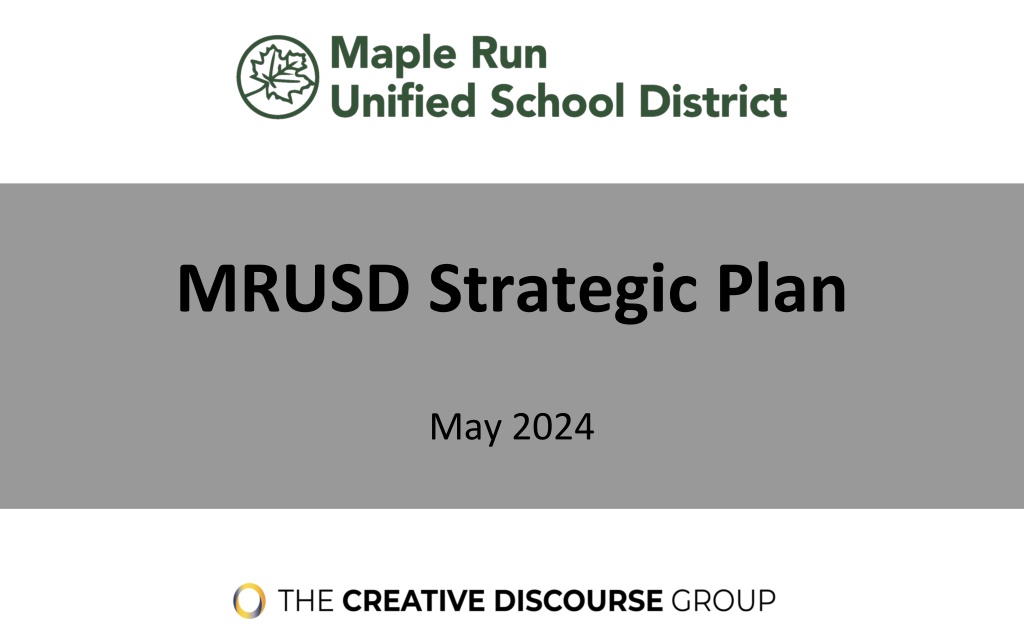
MRUSD Strategic Plan 2024: Goals, Actions, and Community Engagement
Discover the journey of the MRUSD Strategic Plan from community conversations to the development of clear goals and action steps. Learn about the rigorous academic expectations, bias addressing policies, support services, family and community engagement, and inclusion initiatives outlined in the plan.
Download Presentation

Please find below an Image/Link to download the presentation.
The content on the website is provided AS IS for your information and personal use only. It may not be sold, licensed, or shared on other websites without obtaining consent from the author. Download presentation by click this link. If you encounter any issues during the download, it is possible that the publisher has removed the file from their server.
E N D
Presentation Transcript
MRUSD Strategic Plan May 2024
How we got here Strategic Plan Committee & Community Forum (Fall 2023 - Spring 2024) Organizing Committee & Community Summit (Spring 2023) Listening Sessions (Fall 2022) Themes for Change Heard from 90 students and 60 community members on what is going well and what we d like to change A Vision and Goals Heard from the community to turn themes for change into a vision for MRUSD and five clear board- approved goals Strategic Action Plan Develop a theory of action around the fivegoals with action steps, resources needed, and ways to measure success
Goals Committee formed June 2022 Community Conversation Committee formed February 2023 Board adopted District Goals September 2023 Community Listening Sessions fall 2022 Community Conversation Summit event April 15, 2023 Strategic Plan Design Committee formed October 2023
Strategic Plan Design Committee meeting #1 October 2023 Established goals and ways of working. Reviewed outputs of the spring work and worked on indicators for two of the goals (Support Services + Engagement). Strategic Plan Design Committee meeting #4 February 2024 Reported on goal-specific plans and receive feedback from the large group. Forum planning and outreach Community Forum December 2, 2023 Present to The Board April 17, 2024 Strategic Plan Design Committee meeting #2 November 2023 Reviewed outputs from last meeting, worked on indicators for two goals (Addressing Bias + Inclusion), maked a plan to support outreach. Strategic Plan Design Committee meeting #3 January 2024 Digested where we are and how we got here. Broke into goal groups for goal-based plans. Community Forum March 26, 2024
STRATEGIC PLAN GOALS Rigorous Academics and Expectations Consistent Policies to Address Bias and Behavior Issues Support Services for Students and Families Opportunities for Family and Community Engagement Community Education and Action on Inclusion
GOAL Rigorous Academics and Expectations All students feel challenged and supported to excel in traditional and nontraditional learning opportunities based on their individual needs and strengths. THEORY OF ACTION If we define the curriculum with high standards for all students, focus both on content and transferable skills, clearly report student progress to students and families, ensure high quality instruction, then students will feel challenged and supported to excel in their learning opportunities.
Rigorous Academics and Expectations ACTION STEPS RESOURCES NEEDED EVIDENCE TO MEASURE SUCCESS Maintain highly qualified staff to ensure good instruction for students Continuous Professional Development time throughout the school year Post-secondary outcomes & satisfaction as measured by factors such as high school graduation rate, post graduate rates, industry rated credentials, work placement, apprenticeship, college acceptance, and Vermont Student Assistance Corporation surveys Create lifelong learners - transferable skills and agency are essential for life Enough staff for mentoring and coaching on academics & Social Emotional Learning to have SEL not just by choice but by mandate and resources Develop a district vision / definition of high expectations with high supports for all students so every student can meet their rigorous goals Continuing access to flexible pathways: Lighthouse; Life Skills curriculum; Access to Technology Center / Adult Education Supervision and evaluation system for all teachers Develop clearly-articulated curriculum for Social Emotional Learning, Transferable Skills, and Content Areas with high standards for all students Clearly-articulated and implemented curriculum with high standards for all students
GOAL Consistent Policies to Address Bias and Behavior Issues Maple Run policies and procedures on harassment and discipline are consistently applied, while ensuring support and respecting victims, and all involved. THEORY OF ACTION If we design and implement a common code of conduct, train all stakeholders and ensure support for all affected parties then we will reduce our number of behavior incidents and hazing harassment and bullying (HHB) / Title IX incidents within the district and expect improved experience for all parties involved.
Consistent Policies to Address Bias and Behavior Issues ACTION STEPS RESOURCES NEEDED EVIDENCE TO MEASURE SUCCESS Convene a team of community members to write a Code of Conduct for MRUSD which ensures alignment across all schools Time for Professional Development, both internal and external on MRUSD practices, restoring harm and the effects of bias Employees, students, and families understand policies, know how to make a report and how to get support for incidents of harm (bias, hazing harassment and bullying, Title IX) - informal qualitative assessment based on accuracy of reporting Examine policies and procedures Staff assigned to focus on investigations Understand the context of MRUSD Based in restorative practices Community information session (time and staff to plan and implement) MRUSD has an environment, of kindness, respect and inclusion (as articulated in the Code of Conduct) among students, staff, and families based on annual surveys Promotes high expectations and high accountability for all Align responses to conduct across the district Social Emotional Learning curriculum (can be individualized but coaching) embedded for teachers - (such as Pyramid, Responsive Classroom, Second Step) Support developmentally appropriate communications on expectations Behavior incidents become less and decreased in severity across MRUSD based on incident data and annual surveys Develop a response to harm & bias support system for all involved Train all stakeholders (students, staff, families) on the Code of Conduct, Social Emotional Learning curriculum, and the Policies and Procedures as well as proactive and responsive to student behavior
GOAL Support Services for Students and Families All students at each school have access to supports, individualized learning opportunities, and flexible pathways. THEORY OF ACTION If we provide rigorous academics, varied support, and clear two-way communications then every student in Maple Run will be able to utilize support, individualized learning opportunities, and flexible pathways to succeed.
Support Services for Students and Families ACTION STEPS RESOURCES NEEDED EVIDENCE TO MEASURE SUCCESS Engage with students and families to understand the barriers and understand how to improve our delivery of services and better provide connections to external services Social Emotional Learning goals - high leverage concepts, goals, maps Staff, students and families perception of our academic rigor based on surveys More information on the current barriers needed to provide equitable opportunities across the district and grade levels Service delivery and utilization of menu of MRUSD services based on summary report data Extend support for expanded definition of flexible pathways Pathways for two-way communication with families through multiple methods how to access services Staff, students, and families perception of MRUSD meeting their needs based on surveys Develop, publish, and share menu of school services and protocols for access Embed Social Emotional Learning opportunities in all instructional opportunities Multiple pathways for students at all levels Provide a range of supports (academic, behavioral, social and emotional) or connection to external supports to allow all students to reach our high expectations An understanding of and partnerships with external support organisations
GOAL Opportunities for Family and Community Engagement All community members will have the opportunity to engage safely with the school and district through two-way communication and feel welcome in our system. THEORY OF ACTION If we intentionally welcome members of the community (including those who have not historically been part of the school community), develop a comprehensive two-way communication plan, and partner with outside agencies then we will increase the number of families actively engaged in our school system.
Opportunities for Family and Community Engagement ACTION STEPS RESOURCES NEEDED EVIDENCE TO MEASURE SUCCESS Comprehensive events list across MRUSD happenings in & out of schools Number and diversity of events & attendance based on summary event data Work in collaboration with community stakeholders to partner and host an increased number of community wide events a year Person to coordinate efforts of 2-way communication Increased communication out to the community based on communication data Establish a two-way communication plan in order to better engage with the community (staff, students, and families). This includes identifying the best ways to communicate Clear expectations about how to communicate with teachers - if their expectations are disregarded then participation is impacted Increased two-way communication with the community (staff, students, and families) based on communication data Clear MRUSD communication plan with expectations for all staff members Teach positive, civil discourse Work toward collaborative decision- making models with community
GOAL Community Education and Action on Inclusion All students have meaningful, equitable, structured, and consistent education that embeds skill-building regarding diversity, inclusion, and equity. THEORY OF ACTION If we provide opportunities for learning about multiple cultures, ensure resources that reflect the diversity (of all protected classes and beyond) in our community, and teach about bias then students will develop skills and knowledge regarding diversity, equity, and inclusion.
Community Education and Action on Inclusion ACTION STEPS RESOURCES NEEDED EVIDENCE TO MEASURE SUCCESS Bias awareness education for MRUSD community through workshops and productions on relevant topics in the schools Incorporate students in leading education opportunities Time for learning, planning, and enacting The number of bias as well as hazing, harassment, and bullying (HHB) incidents Access to resources and experts to help staff and students meaningfully incorporate multicultural and trauma learning into school practices Successful implementation of Social Emotional Learning knowledge and learning opportunities to students & staff Provide educational opportunities for both staff and students related to diversity, equity, and inclusion and cultural responsiveness (race, ethnicity, ability, gender identity), on a consistent basis Hazing, harassment, and bullying education for community Students and staff learning articulated in the action steps (e.g. personal and school environment) based on self-assessment survey data Curriculum that represents our students and community diversity Find ways to honor multiple cultures, including Abenaki land acknowledgements, throughout MRUSD learning opportunities Social Emotional Learning curriculum Assess curriculum with a diversity, equity, and inclusion lens
Next Steps: MRUSD Board Strategic Plan Design Committee Act as accountability partner for Superintendent and Strategy Committee Incorporate strategy into the board retreat Meet 3 times a year for check-ins and review outputs (surveys, data, etc): 1. Set annual goals 2. Mid-way check-in 3. Review and reflect







